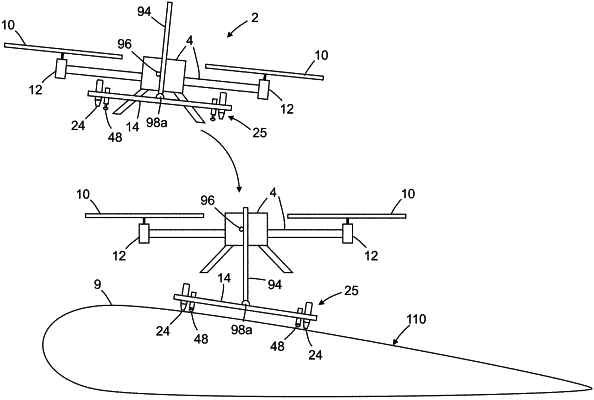| CPC B64C 39/024 (2013.01) [B64F 5/30 (2017.01); B64F 5/40 (2017.01); B64D 1/18 (2013.01); B64U 10/13 (2023.01); B64U 30/20 (2023.01); B64U 2101/00 (2023.01)] | 22 Claims |

|
1. An unmanned aerial vehicle for marking a target surface of a structure or object, the unmanned aerial vehicle comprising:
a first frame;
a plurality of rotor motors mounted to the first frame and capable of producing lift greater than a weight of the unmanned aerial vehicle;
a plurality of rotors operatively coupled to respective rotor motors of the plurality of rotor motors;
a controller programmed to control the rotor motors in a manner that produces lift greater than the weight of the unmanned aerial vehicle
a linear actuator coupled to the first frame;
a second frame pivotably coupled to the linear actuator;
first and second compliant stabilizers supported by the second frame; and
a first marking device supported by the second frame.
|